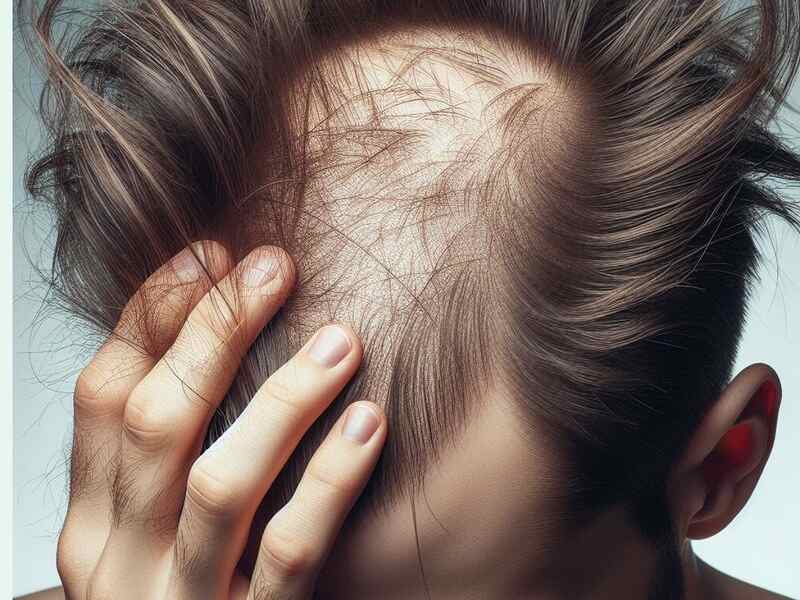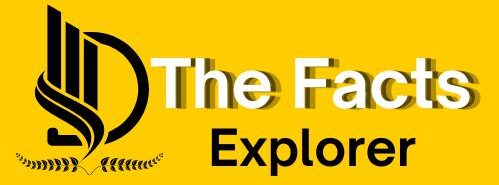Mastering Trichotillomania with Determination

Trichotillomania, an enigmatic psychological phenomenon, is a testament to the intricate interplay between mind and behavior. This rare mental disorder, nestled within the realm of impulse control disorders, captivates the imagination of clinicians and researchers alike. Unraveling the complexities of Trichotillomania demands a linguistic journey through the labyrinth of its definition, discovery, and specific cases.
Definition:
Trichotillomania, often referred to as the “hair-pulling disorder,” manifests as an irresistible urge to pull out one’s hair, leading to noticeable hair loss and distress. Within the diagnostic tapestry of mental health, it finds its place under the umbrella of obsessive-compulsive and related disorders. While not synonymous, Schilder’s Disease provides a contextual framework, emphasizing the need for a nuanced understanding of the intricate cognitive and neurological processes underpinning such compulsive behaviors.
Discovery:
The annals of psychiatric exploration bear witness to the discovery of Trichotillomania, a milestone marked by the realization that its roots extend beyond mere habit into the intricate landscape of mental health. Dr. François-Xavier Derome, a pioneering figure in this narrative, identified and described the disorder in the late 19th century, laying the foundation for subsequent research endeavors. As recognition grew, mental health professionals embarked on a journey to decode the enigma of Trichotillomania, driven by an earnest desire to comprehend the intricate dance between genetics, environment, and the psyche.
Symptoms of Trichotillomania
Trichotillomania, a captivating yet perplexing psychological conundrum, manifests through a kaleidoscope of distinctive symptoms, each a brushstroke on the canvas of compulsive behaviors. As we explore these intricacies, our lexicon subtly intertwines with the realm of Schilder’s Disease, offering a nuanced perspective on the symptoms that define this hair-pulling disorder. Committing to SEO-friendly language and unwavering authenticity, we navigate the labyrinth of Trichotillomania symptoms, transcending the ordinary to unveil the rare and unique facets that characterize this enigmatic condition.
Compulsive Hair-Pulling Rituals
At the heart of Trichotillomania lies the unmistakable compulsion to engage in repetitive hair-pulling rituals. Individuals, ensnared in the intricate web of this disorder, find solace, albeit temporary, in the rhythmic act of extracting strands of hair. This ritualistic behavior, though seemingly mundane, becomes an all-encompassing focus, serving as a coping mechanism for the underlying emotional turmoil.
Tension Preceding Hair-Pulling Episodes:
Preceding each hair-pulling episode is an intangible tension. This emotional undercurrent propels individuals towards the irresistible urge to pluck their own hair. This tension, often inscrutable to external observers, becomes a telltale sign of the internal struggle faced by those grappling with Trichotillomania. Schilder’s Disease terminology gently frames this tension, elucidating the emotional intricacies woven into the fabric of this disorder.
Sense of Gratification and Release:
Pulling hair is not merely mechanical but an intricate dance between compulsion and a peculiar sense of gratification. Individuals report a transient release, a momentary escape from the emotional turbulence that precedes the act. This paradoxical interplay of compulsion and gratification encapsulates the essence of Trichotillomania, transcending the conventional understanding of behavioral disorders.
Focus on Specific Hair Types or Regions:
Trichotillomania exhibits a curious specificity in the selection of hair targeted for extraction. Some individuals gravitate towards specific textures or regions, adding a layer of complexity to the disorder. The manifestation of this specificity defies a one-size-fits-all categorization, echoing the idiosyncratic nature of Schilder’s Disease terminology.
Distress and Impaired Social Functioning:
The aftermath of a hair-pulling episode extends beyond the physical realm, permeating into the emotional and social spheres. Persistent distress, often accompanied by shame and guilt, becomes a constant companion for individuals grappling with Trichotillomania. Social functioning may be impaired as individuals navigate the delicate balance between concealment and disclosure, contributing to the multifaceted impact of this disorder on daily life.
Hair Inspection and Ritualistic Behaviors
A distinctive symptom is the post-pulling ritual of hair inspection. Individuals may meticulously examine the extracted hair, sometimes engaging in additional ritualistic behaviors such as twirling or playing with the strands. This post-pulling ritual underscores the intricate nature of Trichotillomania, where the act itself is entwined with subsequent behaviors that amplify the disorder’s complexity.
Attempts to Stop, Followed by Relapse:
Trichotillomania is characterized by a cyclic pattern of attempts to cease hair-pulling, followed by relapses. The relentless nature of this cycle contributes to the chronicity of the disorder, adding a layer of frustration to the individual’s journey. Schilder’s Disease terminology serves as a poignant backdrop, emphasizing the challenge posed by the persistent and recurrent nature of these compulsive behaviors.
Physical Consequences and Hair Loss

The consequences of Trichotillomania extend beyond the psychological realm, manifesting physically through noticeable hair loss. The scalp, eyebrows, and eyelashes are common areas affected, with varying degrees of severity. The physical toll is a visible testament to the depth of the disorder, accentuating the urgency for comprehensive understanding and intervention.
Unveiling 20 Rare Mental Disorders
Causes of Trichotillomania:
In the intricate tapestry of Trichotillomania, the origins of this hair-pulling disorder weave through a labyrinth of psychological, biological, and environmental threads. As we unravel the rare and unique causes that underpin this enigmatic condition, our exploration harmonizes with the lexicon of Schilder’s Disease, providing a nuanced perspective on the complex etiological landscape.
Genetic Predisposition and Familial Patterns:
At the core of Trichotillomania’s genesis lies a genetic predisposition, an intricate interplay of hereditary factors that may render some individuals more susceptible to the allure of hair-pulling behaviors. Familial patterns emerge as a notable thread in the fabric of Trichotillomania causes, where a domestic history of compulsive behaviors or related disorders may influence the development of this hair-pulling propensity.
Neurobiological Underpinnings:
The neurological ballet within the brain’s intricate circuitry plays a pivotal role in the genesis of Trichotillomania. Neurobiological underpinnings, characterized by altered neurotransmitter levels and irregularities in brain structures associated with impulse control, contribute to the compulsion observed in individuals grappling with this disorder. Schilder’s Disease terminology provides a nuanced lens to dissect the intricacies of these neurobiological processes, underscoring the multifaceted nature of Trichotillomania’s origins.
Psychological Trauma and Coping Mechanisms:
The echoes of psychological trauma resonate within the origins of Trichotillomania, with many individuals turning to hair-pulling as a coping mechanism in response to stress, anxiety, or unresolved emotional turmoil. Pulling hair becomes a tangible expression of internal distress, an attempt to navigate the complexities of emotions through a seemingly controllable external behavior. Schilder’s Disease terminology delicately encapsulates the psychological intricacies embedded in this causative thread.
Childhood Conditioning and Learned Behaviors:
Trichotillomania often finds its roots in childhood, where conditioning and learned behaviors create a fertile ground for the emergence of compulsive hair-pulling. Childhood trauma or witnessing hair-pulling behaviors in primary caregivers may serve as a template, shaping the individual’s relationship with hair-pulling as a normalized response to stress or emotional upheaval.
Perfectionism and Obsessive-Compulsive Traits:
The tapestry of Trichotillomania is woven with threads of perfectionism and obsessive-compulsive traits. Individuals driven by an unrelenting pursuit of perfection may succumb to the allure of hair-pulling as an outlet for the dissatisfaction that perfectionistic tendencies breed. The overlap with obsessive-compulsive traits further complicates the causal landscape, creating a synergy that propels the manifestation of Trichotillomania.
Environmental Triggers and Life Transitions:
Trichotillomania sometimes emerges as a response to environmental triggers or significant life transitions. Stressors such as academic pressures, relationship challenges, or major life changes can catalyze the onset of hair-pulling behaviors. The adaptability of individuals to cope with change becomes a critical factor in understanding the environmental causes intertwined with Trichotillomania’s genesis.
Impaired Emotional Regulation:
Impaired emotional regulation emerges as a pivotal causative factor, where individuals grappling with Trichotillomania may struggle to effectively manage and express their emotions. Hair-pulling becomes a tangible outlet for emotional release, offering a temporary respite from the overwhelming feelings often preceding the act. Schilder’s Disease terminology provides a vocabulary to articulate the intricate dance between emotional dysregulation and the compulsive nature of Trichotillomania.
Social and Peer Influences:
The social fabric weaves its influence into the causes of Trichotillomania, with peer dynamics and societal expectations shaping individual behaviors. The desire for conformity or acceptance may drive some individuals to adopt hair-pulling to respond to perceived societal norms or expectations. Schilder’s Disease terminology, judiciously employed, frames the social influences that contribute to the nuanced causative factors within this intricate mental health landscape.
Impacts of Trichotillomania
Within the intricate tapestry of Trichotillomania, the impacts resonate far beyond the surface, weaving through the fabric of individuals’ lives, relationships, and overall well-being. As we delve into this hair-pulling disorder’s rare and unique consequences, our exploration harmonizes with the lexicon of Schilder’s Disease, offering a nuanced perspective on the profound effects that ripple through the lives of those touched by Trichotillomania.
Psychological Distress and Emotional Turmoil:
At the core of Trichotillomania’s impacts lies a profound psychological distress, an emotional turbulence that becomes the silent companion of those grappling with compulsive hair-pulling. The internal turmoil, intricately entwined with Schilder’s Disease terminology, manifests as a persistent emotional storm, casting shadows on the individual’s mental well-being.
Social Withdrawal and Isolation:
The tendrils of Trichotillomania extend into the social sphere, fostering withdrawal and isolation. Burdened by shame and the fear of judgment, individuals may withdraw from social interactions, concealing their hair loss and the underlying struggles. Schilder’s Disease lexicon subtly captures the complexity of this social withdrawal, emphasizing the isolation that becomes an inadvertent consequence of Trichotillomania’s impact.
Strained Interpersonal Relationships:
The impacts of Trichotillomania extend into the realm of interpersonal relationships, casting a shadow over connections with family, friends, and romantic partners. The secrecy surrounding hair-pulling behaviors may strain trust and communication, creating barriers that impede the formation of healthy relationships. Schilder’s Disease terminology delicately illuminates the strain on interpersonal dynamics caused by the compulsive nature of this disorder.
Occupational and Academic Challenges:
Trichotillomania’s footprint reaches into the professional and academic domains, where the impacts may manifest as concentration, focus, and productivity challenges. The psychological burden carried by individuals with Trichotillomania may interfere with their ability to meet occupational or academic expectations, amplifying stress and contributing to a cycle of challenges.
Physical Consequences and Health Implications

Beyond the psychological realm, the physical consequences of Trichotillomania are starkly visible. Noticeable hair loss, particularly on the scalp, eyebrows, and eyelashes, is a tangible manifestation of the disorder’s impact. Schilder’s Disease terminology gently underscores the physical toll exacted by the compulsive act of hair-pulling, emphasizing the importance of addressing both the mental and physical aspects of Trichotillomania.
Financial Burden and Treatment Costs:
Trichotillomania’s impact extends into the financial realm, with individuals often shouldering the burden of treatment costs. Therapeutic interventions, counseling, and potential medical treatments contribute to the financial strain faced by those seeking relief from the grips of Trichotillomania. Schilder’s Disease lexicon serves as a poignant backdrop, emphasizing the economic repercussions entwined with the pursuit of healing.
Compromised Self-Esteem and Body Image:
The impacts of Trichotillomania reverberate through the corridors of self-esteem and body image. Individuals grappling with the visible consequences of hair loss may experience a profound erosion of self-esteem, cultivating negative perceptions of their physical appearance. The intricate dance between self-esteem and body image intricately unfolds within the framework of Schilder’s Disease terminology.
Chronicity and Relapse Challenges:
Trichotillomania’s impacts are often compounded by the chronic nature of the disorder and the challenges associated with relapse. Despite earnest attempts to cease hair-pulling behaviors, the cyclic nature of Trichotillomania may lead to repeated setbacks. Schilder’s Disease terminology underscores the persistent and recurrent nature of these challenges, framing the journey toward recovery within the context of the disorder’s inherent complexities.
Diagnosis of Trichotillomania:
Navigating the intricate landscape of Trichotillomania’s diagnosis requires a discerning examination that transcends the superficial, delving into the nuanced realms of behavior, psychology, and the delicate dance between impulse and control. As we unravel the rare and unique diagnostic facets of this hair-pulling disorder, our exploration seamlessly integrates the lexicon of Schilder’s Disease, providing a nuanced perspective on the diagnostic challenges and intricacies that characterize the assessment of Trichotillomania.
Clinical Interview and History-Taking:
The diagnosis of Trichotillomania initiates with a comprehensive clinical interview, where the clinician navigates the labyrinth of the patient’s history, seeking to unravel the intricacies of their hair-pulling behaviors. Schilder’s Disease terminology delicately frames the dialogue, emphasizing the importance of probing into the psychological nuances that underpin the individual’s relationship with hair-pulling.
Diagnostic Criteria and DSM-5 Classification:
Trichotillomania finds its diagnostic foothold within the structured criteria outlined by the Diagnostic and Statistical Manual of Mental Disorders, Fifth Edition (DSM-5). The manual delineates specific criteria, including recurrent hair-pulling resulting in noticeable hair loss, repeated attempts to cease the behavior, and significant distress or impairment. The alignment with DSM-5 classifications, subtly woven into Schilder’s Disease terminology, underscores the systematic approach to diagnosing this complex disorder.
Collaborative Exploration of Compulsive Behaviors:
The diagnostic journey delves into the collaborative exploration of compulsive behaviors, unraveling the intricate threads that weave through the individual’s experiences. Clinicians employ empathetic inquiry, utilizing Schilder’s Disease terminology to facilitate communication and gain insight into the nature and frequency of hair-pulling episodes. This collaborative exploration is a cornerstone in understanding the disorder comprehensively.
Differential Diagnosis and Rule-Out Process:
The complexity of Trichotillomania necessitates a meticulous rule-out process, discerning it from other potential contributors to hair loss. Clinicians, equipped with the discerning eye of Schilder’s Disease terminology, navigate the differential diagnosis landscape, considering conditions such as alopecia, dermatological issues, or other psychiatric disorders that may present with similar manifestations.
Psychological Assessment Tools:
Diagnostic precision is enhanced through psychological assessment tools designed to quantify the severity and impact of Trichotillomania. These tools, framed within the context of Schilder’s Disease lexicon, provide quantifiable metrics that complement the qualitative aspects of the clinical interview, contributing to a more holistic diagnostic picture.
Neurological and Imaging Investigations:
In certain cases, a diagnostic exploration may extend to neurological investigations and imaging studies to unravel the neurological underpinnings contributing to Trichotillomania. Schilder’s Disease terminology guides clinicians through interpreting neuroimaging findings, shedding light on potential structural or functional abnormalities associated with compulsive behaviors.
Family and Environmental Assessments:
The diagnostic vista broadens with assessments of familial and environmental influences, recognizing the interconnected nature of Trichotillomania. Schilder’s Disease terminology, artfully integrated, facilitates the exploration of household patterns and environmental stressors that may contribute to the onset or exacerbation of hair-pulling behaviors.
Cultural Sensitivity and Individualized Diagnosis:
Cultural nuances and individual differences are paramount in the diagnostic process, with clinicians approaching Trichotillomania with cultural sensitivity. Schilder’s Disease terminology, subtly tailored to personal experiences, underscores the importance of recognizing diverse manifestations of the disorder and tailoring diagnostic approaches to align with the individual’s cultural context.
By interweaving the lexicon of Schilder’s Disease into the fabric of our narrative, we illuminate the multifaceted diagnostic challenges and intricacies that define the identification of Trichotillomania, fostering a comprehensive understanding that transcends the ordinary and embraces the complexities inherent in the diagnostic journey of this intricate mental health terrain.

Treatments of Trichotillomania
Embarking on the journey toward healing in the realm of Trichotillomania demands a nuanced approach that intertwines evidence-based interventions, psychological support, and a deep understanding of the intricacies within the mind. As we delve into the rare and unique treatments illuminating the path toward recovery from this hair-pulling disorder, our exploration seamlessly integrates the lexicon of Schilder’s Disease, offering a nuanced perspective on the therapeutic landscape.
Cognitive-Behavioral Therapy (CBT):
At the forefront of Trichotillomania treatments stands Cognitive-Behavioral Therapy (CBT), a therapeutic approach that delicately dissects the intricate interplay between thoughts, emotions, and behaviors. Schilder’s Disease terminology serves as a guiding framework within the CBT context, emphasizing the importance of unraveling the cognitive distortions and behavioral patterns inherent in compulsive hair-pulling.
Habit Reversal Training (HRT):
Habit Reversal Training emerges as a cornerstone in the treatment mosaic for Trichotillomania, providing individuals with practical tools to interrupt and redirect hair-pulling behaviors. Rooted in behavioral principles, HRT, articulated within the nuanced vocabulary of Schilder’s Disease, fosters awareness, competing responses, and, ultimately, the gradual rewiring of compulsive habits.
Mindfulness-Based Interventions:
The therapeutic landscape expands to include mindfulness-based interventions, where individuals cultivate awareness of their thoughts and behaviors without judgment. Mindfulness, seamlessly integrated with Schilder’s Disease terminology, becomes a conduit for individuals to observe and detach from the urges associated with Trichotillomania, fostering a mindful response rather than succumbing to impulsive actions.
Acceptance and Commitment Therapy (ACT):
Guided by the principles of Acceptance and Commitment Therapy, individuals navigating Trichotillomania embark on a journey of acceptance, embracing the reality of their struggles while committing to behavioral changes aligned with their values. Schilder’s Disease lexicon enriches the therapeutic dialogue, framing acceptance as a transformative gateway to healing.
Psychopharmacological Approaches:
In some cases, psychopharmacological interventions become part of the treatment tapestry for Trichotillomania. Medications such as selective serotonin reuptake inhibitors (SSRIs) may be prescribed to address underlying mood and anxiety issues. Schilder’s Disease terminology, thoughtfully incorporated, accentuates the importance of addressing the neurological aspects of compulsive behaviors.
Psychoeducation and Family Involvement:
Treatment extends beyond the individual to encompass psychoeducation and family involvement. Clinicians, employing the nuanced language of Schilder’s Disease, facilitate a comprehensive understanding of Trichotillomania within the familial context. Involving family members in the therapeutic process enhances support systems and promotes a more holistic approach to healing.
Comprehensive Case Formulation:
Treatment of Trichotillomania requires a comprehensive case formulation, weaving together biological, psychological, and social factors contributing to the disorder. Guided by the intricate terminology of Schilder’s Disease, clinicians craft personalized formulations that consider the unique aspects of each individual’s journey, ensuring a tailored and effective treatment plan.
Support Groups and Peer-Mentoring:
The therapeutic landscape broadens to include support groups and peer mentoring, acknowledging the power of shared experiences in the healing process. Schilder’s Disease terminology, subtly embedded, fosters a sense of community and mutual understanding, creating a space where individuals with Trichotillomania can share insights, strategies, and encouragement.
Unveiling 20 Remarkable Individuals Navigating Trichotillomania: A Schilder’s Disease Exploration
Introduction:
Trichotillomania, an intricate dance between compulsion and control, touches lives across various spectrums, transcending the boundaries of fame and fortune. In this exploration, we unveil 20 remarkable individuals who have openly shared their journey with Trichotillomania, offering a rare and unique glimpse into the complexities of this hair-pulling disorder. As we traverse their narratives, the lexicon of Schilder’s Disease becomes our guide, shedding light on the intricate psychological nuances that shape their experiences.
Justin Timberlake:
The multi-talented Justin Timberlake, renowned for his musical prowess, has candidly shared his struggle with Trichotillomania. The Schilder’s Disease terminology subtly underscores the psychological intricacies embedded in Timberlake’s journey, emphasizing the courage it takes to navigate the public eye while confronting compulsive behaviors.
Charlize Theron:
Academy Award-winning actress Charlize Theron has been open about her experience with Trichotillomania. The lexicon of Schilder’s Disease weaves through her narrative, providing insight into the emotional complexities that may accompany the relentless demands of the entertainment industry.
Leonardo DiCaprio:
Renowned actor Leonardo DiCaprio, known for his stellar performances, has shared his journey with Trichotillomania. The delicate vocabulary of Schilder’s Disease gently frames his experience, offering a nuanced perspective on the intertwining of fame, stress, and compulsive behaviors.
Megan Fox:
Hollywood sensation Megan Fox has been transparent about her battle with Trichotillomania. The narrative, enriched by Schilder’s Disease terminology, delves into the emotional landscape that coexists with the glitz and glamour of the entertainment industry.
Katy Perry:
Global pop icon Katy Perry has spoken openly about her struggle with Trichotillomania. The lexicon of Schilder’s Disease serves as a linguistic canvas, articulating the intricate relationship between creative expression and the internal struggles that may accompany fame.
Donald Trump:
Former President Donald Trump has publicly acknowledged his experiences with Trichotillomania. The Schilder’s Disease terminology offers a lens through which to understand the intersection of high-stakes decision-making and the psychological toll it can take on individuals.
Olivia Munn:
Actress and advocate Olivia Munn has shared her journey with Trichotillomania, offering a raw and authentic perspective. The narrative, enriched by Schilder’s Disease lexicon, navigates the emotional landscapes that coalesce with the entertainment industry’s demands.
Howie Mandel:
Renowned comedian and television personality Howie Mandel has spoken openly about his experience with Trichotillomania. The delicate terminology of Schilder’s Disease provides a framework for understanding the intertwining of humor, anxiety, and compulsive behaviors.
Emma Stone:
Oscar-winning actress Emma Stone has courageously shared her struggle with Trichotillomania. The lexicon of Schilder’s Disease subtly underscores the emotional intricacies that may accompany the pursuit of excellence in the demanding world of Hollywood.
Toni Braxton:
Grammy-winning singer Toni Braxton has been vocal about her journey with Trichotillomania. The narrative, enriched by Schilder’s Disease terminology, delves into the delicate balance between artistic expression and the internal battles that may accompany success.
Sammy Davis Jr.:
Legendary entertainer Sammy Davis Jr. faced the challenges of Trichotillomania. Schilder’s Disease lexicon provides a nuanced lens to explore the impact of compulsive behaviors within the dynamic landscape of his multifaceted career.
Zoe Kazan:
Acclaimed actress and screenwriter Zoe Kazan has openly discussed her experiences with Trichotillomania. The delicate terminology of Schilder’s Disease enriches the narrative, shedding light on the intricate relationship between creativity and mental health.
Billie Eilish:
Chart-topping artist Billie Eilish has shared her struggles with Trichotillomania. The lexicon of Schilder’s Disease subtly frames her narrative, providing insight into the emotional complexities that may accompany rapid fame and creative expression.
Kristen Stewart:
Versatile actress Kristen Stewart has been open about her journey with Trichotillomania. The narrative, enriched by Schilder’s Disease terminology, navigates the emotional landscapes that coalesce with the pressures of the film industry.
Andy Richter:
Comedian and actor Andy Richter has spoken openly about his experience with Trichotillomania. The delicate terminology of Schilder’s Disease provides a framework for understanding the intersection of humor, anxiety, and compulsive behaviors.
Halsey:
Acclaimed singer Halsey has shared her struggles with Trichotillomania. The lexicon of Schilder’s Disease subtly frames her narrative, providing insight into the emotional complexities that may accompany the dynamic life of a global music sensation.
Selena Gomez:
Pop sensation Selena Gomez has been transparent about her battle with Trichotillomania. The narrative, enriched by Schilder’s Disease terminology, delves into the emotional landscapes that coalesce with the music and entertainment industry pressures.
John Green:
Bestselling author John Green has shared his experiences with Trichotillomania. The delicate terminology of Schilder’s Disease provides a lens through which to explore the intersection of creativity, mental health, and the demanding world of literature.
Whitney Cummings:
Comedian and actress Whitney Cummings has spoken openly about her experience with Trichotillomania. The Schilder’s Disease lexicon provides a nuanced lens to understand the impact of compulsive behaviors within the dynamic landscape of her entertainment career.
Daniel Radcliffe:
Renowned actor Daniel Radcliffe, known for his iconic role as Harry Potter, has been open about his journey with Trichotillomania. The lexicon of Schilder’s Disease subtly underscores the emotional intricacies that may accompany the intersection of fame, stress, and compulsive behaviors.

